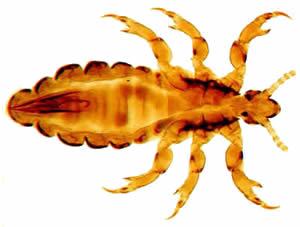Teaching Evolution Using Animal Models
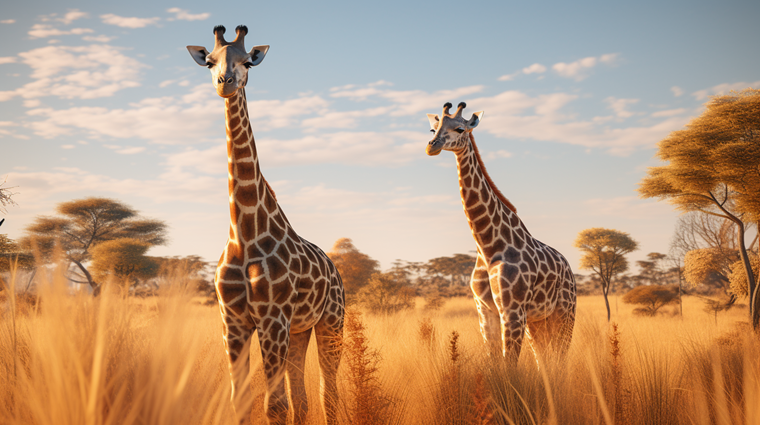
Giraffes
- biogeography
- common descent
- taxonomy (species vs. subspecies)
- binomial nomenclature
- cladogram
- debunking Larmark's theory of acquired characteristics
Giraffes are usedin a powerpoint presentation asking students to identify reasons why so many different subspecies of giraffes are present. Criticisms of Larmark's theory included as well as specifics on what makes a species, how species are named, and reading cladograms.
Darwin's Finches
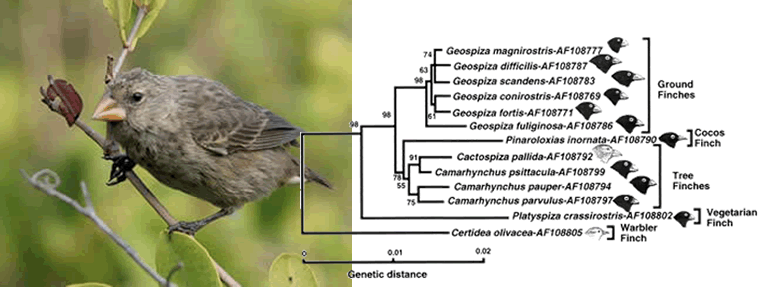
- biogeography
- natural selection
- speciation
- adaptive radiation
- cladogram
Presentation on Darwin's Finches
HHMI Video ~16 min , includes additional activities
Finches are also included in the giraffe presentation to compare how subspecies of finches are like subspecies of giraffes, each adapating to different areas. This allows modern and historical contexts to be established.
Domesticated Dogs
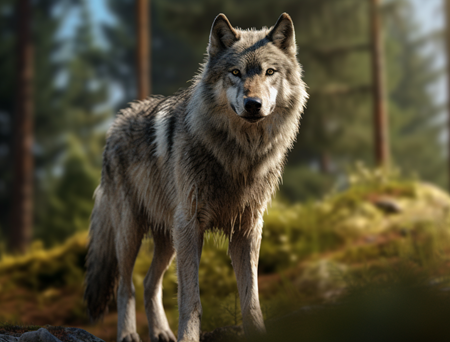
- subspecies vs. breed
- hybridization and isolating mechanisms
- neoteny - (juvenile characteristics present in adults)
- artificial selection
- comparing dogs, coyotes, wolves as a genus (Canis)
Each video is one hour, it is probably more efficient to watch clips or the trailer to start a discussion on artificial selection.
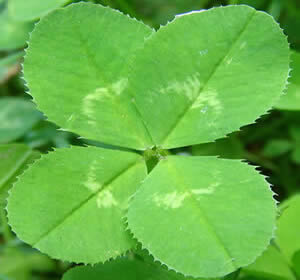
White Striped Clover
- relative fitness
- selection strength
- population distribution
- polymorphism
A case study on the White Striped Clover is a good way to remind students that plants also evolve. The case study includes complex concepts related to evolution and asks students to explain polymorphisms in species.
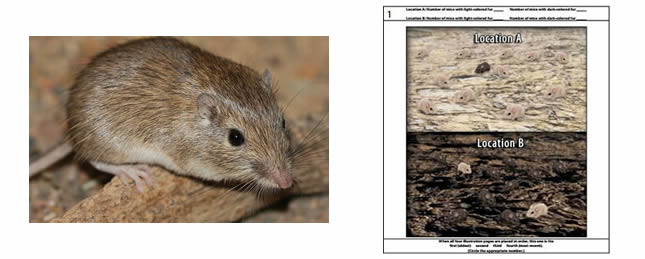
Rock Pocket Mouse
- polymorphism
- speciation
- genetic mutation
- natural selection
Ask students to arrange series of photographs to indicate how the mouse population changed. Students can also watch the video at HHMI that explains how random mutations can drive changes in populations. (There is also a version of the video with a built-in quiz.)
Tiktaalik
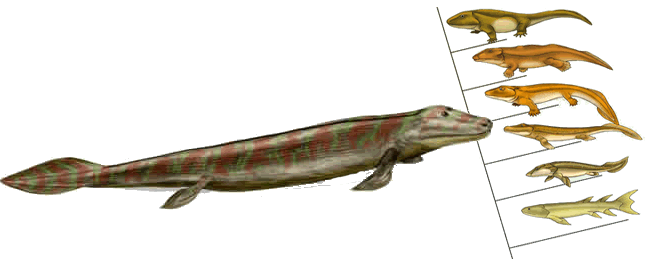
- homologous structures
- fossil evidence
- cladogram
- sonic hedgehog (gene that codes for growth of limbs and digits)
The video "Your Inner Fish" can be streamed from youtube or HHMI and it is one of my favorites to introduce evolution. It focuses on a transitional organsim thought to be the link between fish and amphibians, the tiktaalik.
Stickleback Fish
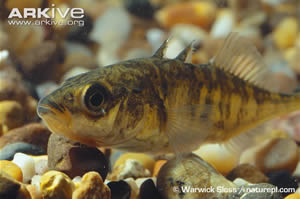
- natural selection
- isolation
- sea water versus freshwater populations
- data collection and analysis, sampling error
- fitness
A virtual lab at HHMI provides background information on stickback fish shows students how gathering data on fish spines reveals clues about the environment they live in.
Lice
- hominids
- cladogram (phylogeny)
- co-speciation / coevolution
- niche
- morphotypes
A presentation case study is used to show how three different types of lice evolved: head lice, body lice, and pubic lice. It highlights the connections between humans and other primates and is a good alternative to traditional units on human evolution that can become mired in details related to the taxonomy and naming of hominids.
